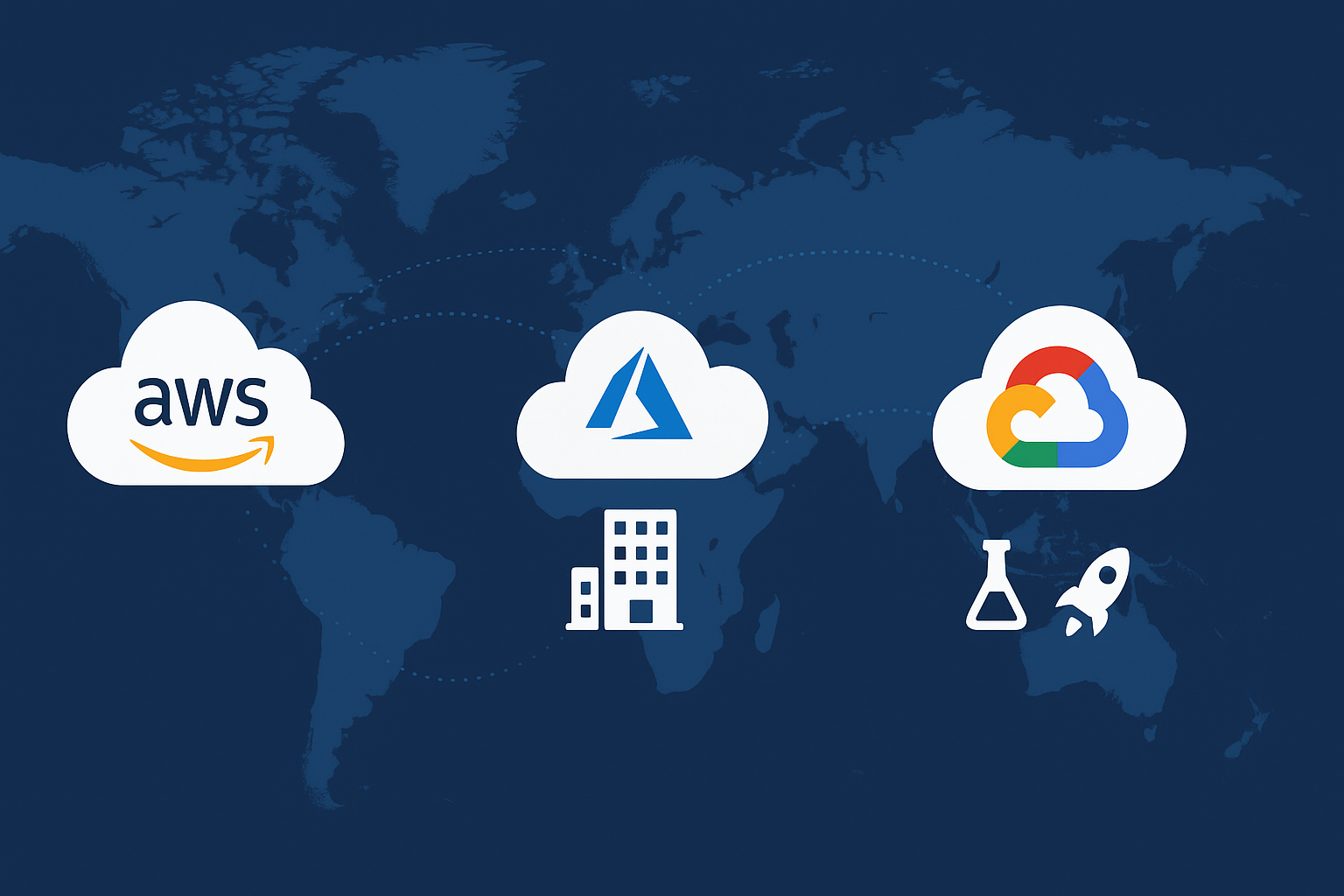Cloud AI : AWS & GCP & AZURE | 매거진에 참여하세요
Cloud AI : AWS & GCP & AZURE
#Cloud #AI #Data #Center #Strategy #AIComparis #Cost #Factor
Cloud AI Showdown: Azure vs. AWS vs. Google Cloud : The Current State of Cloud AI
As of 2025, the cloud AI market has crystallized into a three-way race: Microsoft Azure, Amazon AWS, and Google Cloud.
With the explosive rise of generative AI, enterprises are no longer just choosing cloud infrastructure.
They now face strategic decisions that span AI services, cost models, performance, and the broader ecosystem.
For companies that rely on the cloud for model training, data processing, and service deployment,
the choice of provider directly affects cost structure, speed, scalability, and regulatory compliance.
Ecosystem by Provider
Microsoft Azure
- Key traits: Deep partnership with OpenAI, strong enterprise integration
- Services: Azure OpenAI Service, Cognitive Services, Azure ML
- Strengths: Seamless integration with Microsoft 365 and Dynamics, enterprise-grade security and compliance
- Limitations: Reliant on OpenAI’s model roadmap and pricing
Amazon AWS
- Key traits: Global infrastructure dominance, broad AI portfolio
- Services: SageMaker, Bedrock (Anthropic, Cohere, AI21), Rekognition, Comprehend
- Strengths: Unmatched scalability, diverse frameworks, global reach
- Limitations: Complex service catalog, sometimes confusing pricing
Google Cloud
- Key traits: Research-driven, TensorFlow and Vertex AI ecosystem
- Services: Vertex AI, Generative AI Studio (PaLM, Gemini, GPT), AI APIs (Vision, Speech, Translation)
- Strengths: Cutting-edge AI research, TPU-powered training, seamless analytics + ML integration
- Limitations: Less enterprise integration experience, smaller infrastructure footprint in some regions

Head-to-Head Comparison
Category | Azure (Microsoft) | AWS (Amazon) | Google Cloud |
|---|---|---|---|
Generative AI | GPT-based, Copilot | Anthropic, Cohere, AI21 via Bedrock | PaLM, Gemini |
Training Infra | GPU/CPU/FPGA | GPU/CPU/Inferentia | TPU/GPU/CPU |
MLOps | Azure ML | SageMaker | Vertex AI |
Data Analytics | Power BI | Redshift, Athena | BigQuery |
Compliance | Strong (GDPR, ISO, etc.) | Global coverage | Focused on US/EU |
Enterprise Fit | Best for MS ecosystem | Global scale, flexible infrastructure | Research/startup friendly |
Cost and Scalability
Azure: Enterprise contracts, additional Copilot API call costs
AWS: Pay-as-you-go pricing, Bedrock APIs flexible for generative AI workloads
Google Cloud: TPU training is relatively cost-efficient; PaLM/Gemini APIs add per-call charges
Scalability highlights:
AWS: Largest global region coverage, excels at distributed training
Azure: Optimized for enterprises already embedded in Microsoft systems
Google: TPU advantage, strong for R&D and startups
Real-World Applications
Enterprise (Finance)
Azure: Internal document analysis, Copilot for automated reporting
AWS: Credit scoring models, Bedrock-powered chatbots
Google: Risk modeling via Vertex AI, BigQuery integration
Startup (Healthcare)
Azure: HIPAA-compliant medical data analysis
AWS: Global-scale deployments with SageMaker MLOps
Google: Medical imaging AI, TPU-powered fast training
Manufacturing
Azure: IoT sensor analysis, predictive maintenance with Copilot
AWS: Real-time streaming + SageMaker for efficiency
Google: Vision API + Vertex AI for automated quality control
Strategic Choice
Large enterprises → Azure (tight MS ecosystem integration, compliance strength)
Global scale companies → AWS (infrastructure reach, flexible frameworks)
Startups & research-driven orgs → Google Cloud (TPU, Vertex AI, research DNA)
Key decision factors:
Cost models: API calls, training, inference
Scalability: region availability, infrastructure expansion
Compliance: GDPR, ISO, local data sovereignty
Business alignment: enterprise IT vs. research agility
Final Takeaway
The cloud AI race isn’t just about technology. It’s about making the right strategic fit for your business.
Azure → Enterprise-first, Copilot integration, strong compliance
AWS → Global reach, flexible MLOps, partner-rich ecosystem
Google Cloud → Research powerhouse, TPU advantage, startup-friendly
Winning with cloud AI will require more than comparing benchmarks,it means aligning your provider choice with cost structure, scalability, regulatory needs, and long-term business goals.






